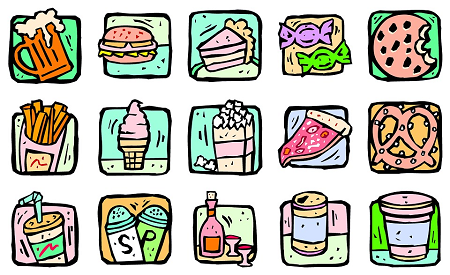Demand for convenience and food and drink ‘on-the-go’ is helping to drive sales of snacking products, particularly crisps and salty snacks, across Europe.
This is according to IRI, the big data and technology expert for consumer industries, which has analyzed the Top FMCG Categories in 2017 across six major European countries (UK, France, Germany, Italy, Spain and the Netherlands).
A key driver within the ambient food category, the growth in snacks is being boosted by consumers’ increasingly busy lifestyles and preference for eating on-the-go – often as an alternative to traditional meals eaten at home. Overall, ambient food was worth €96 billion across key IRI European countries last year, and grew by +1.4% on average, with Germany and the Netherlands showing the biggest growth, both up +2.3% year on year (YoY).
Within the ambient category, crisps and salty snacks, with total sales of €6.3 billion (+3.7% YoY), was a common growth driver across all countries, ranking inside the top 10 for absolute growth YoY in all but two countries. Category sales grew fastest in Italy, with underlying volumes up +7.5% YoY led by increasing rate of sale.
The health-conscious consumer
As highlighted in IRI’s European Shopper Survey last year, health and wellbeing is increasingly important for shoppers, dictating their food and drink choices and helping to drive growth in organic, vegetarian and gluten-free products.
IRI’s analysis shows that consumers are opting for healthier or lighter products, such as individually portioned fruit, nuts, popcorn, baked and vegetable crisps/chips, as their snack of choice. Double-digit growth of vegetable chips, for example, is being fuelled by new product development, including root vegetable, pea, rice and lentil variants, from niche and mainstream brands.
IRI also shows that bottled mineral water volumes are now growing ahead of colas across all countries (+3.3% vs -3.4% YoY), suggesting that more consumers are opting to re-hydrate, detox and consider their general wellbeing. Concerns regarding high sugar content linked to health issues like obesity and diabetes are playing an influential role. This decline in fizzy drink sales could be compounded further in the UK with the impending introduction of a soft drinks tax (April 2018) and proposed further hikes in France where a levy has been in place since 2013.
Olly Abotorabi, Senior Regional Insights Manager at IRI, comments: “Our analysis of the bestselling macro categories in 2017 throws up some interesting developments in terms of the changing profile of the typical European shopper. Quick and easy access to food and drink choices is becoming more important, so manufacturers and retailers will need to maximize opportunities here.
“Portability and re-sealable packaging, for example, are increasingly valuable assets in delivering convenience for the on-the-go consumer. But they will need to balance this with demand for healthier options, as sugary snacks become less attractive to shoppers, and offer alternatives more suited to guilt-free grazing, such as nuts and seeds, fruit and popcorn.”
Trends in alcohol
Total sector value grew strongly across all countries, worth €62 billion, up 2.6% YOY.
Beer was the leading growth category in terms of absolute value growth year on year in most countries. Premiumization of beers, and especially craft beers, helped to drive sales in most countries, including the UK and Spain (+4% YoY). Perhaps surprisingly, sales of beer in Germany were down -0.5 YoY, driven by a decline in Pilsner lager, overshadowing the growth from Radler (beer mixed with soft drink) and craft style Hell Lager from Munich.
Spirits emerged the main winner in the German alcohol category, up 2.3% YoY. In France, spirits also did well, with Rum up +12% YoY, leading the surge in popularity of more modern spirits as traditional liqueurs decline. A star performer across Western Europe in 2017, Gin saw a strong upturn in fortunes, with double digit growth in Germany (+39%), Italy (+10%) France (+17%) and the UK (+24% YoY).
IRI’s Olly Abotorabi adds: “It’s no surprise that the likes of Gin are proving very popular in many countries driven by an increasing number of small and niche batch distillers, celebrity culture and enhanced in-store exposure via displays during key seasonal events. Spirits in general are seeing good growth across most markets. Notably the move towards premiumization, flavour innovations and an increased appetite for beers and ciders with crafty credentials provide a huge opportunity for brands in this category.”
To see a copy of the IRI Top Categories 2017 Special Report, visit: https://www.iriworldwide.com/IRI/media/IRI-Clients/International/Top-Categories-Special-Report-2018.pdf

